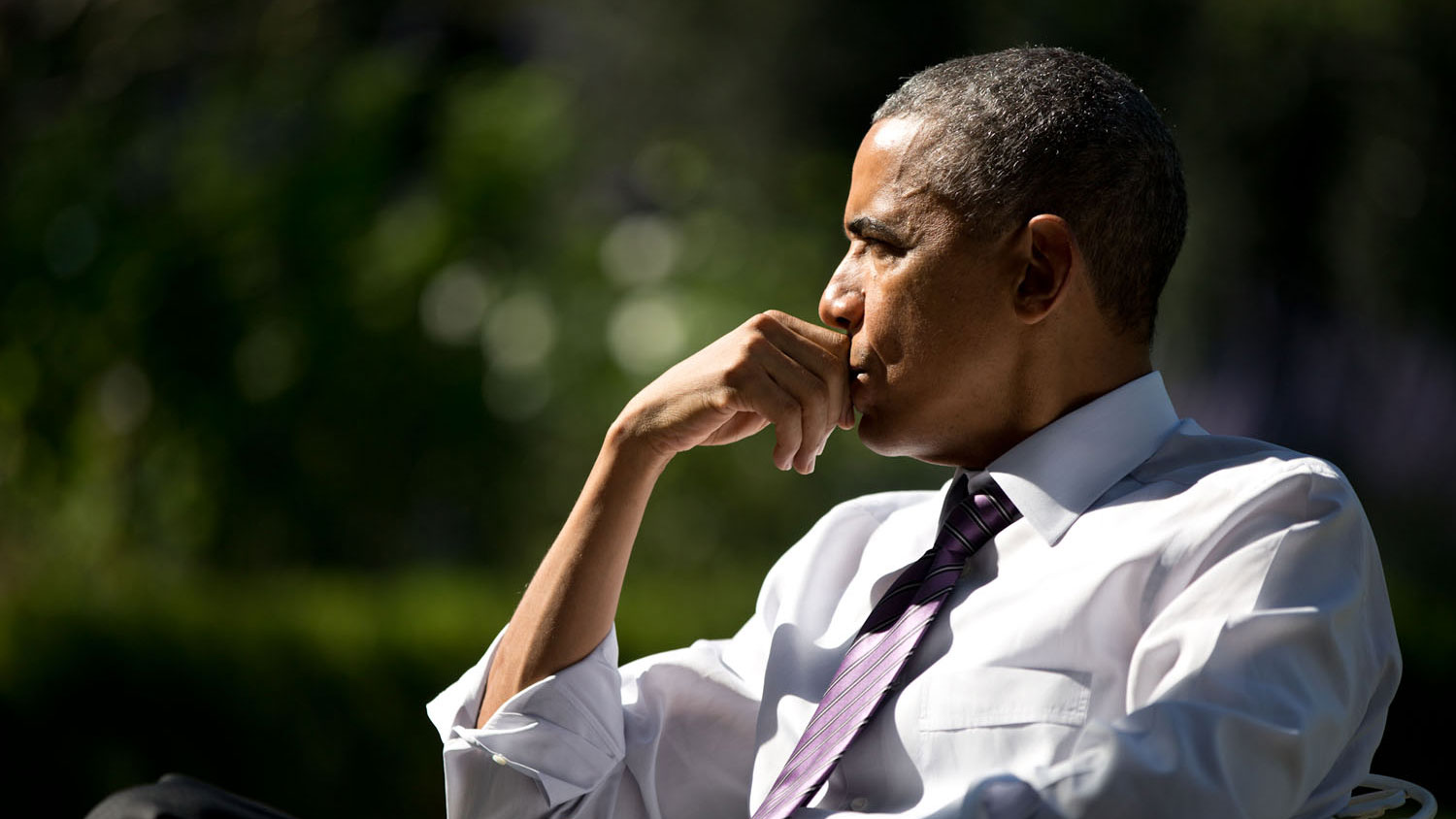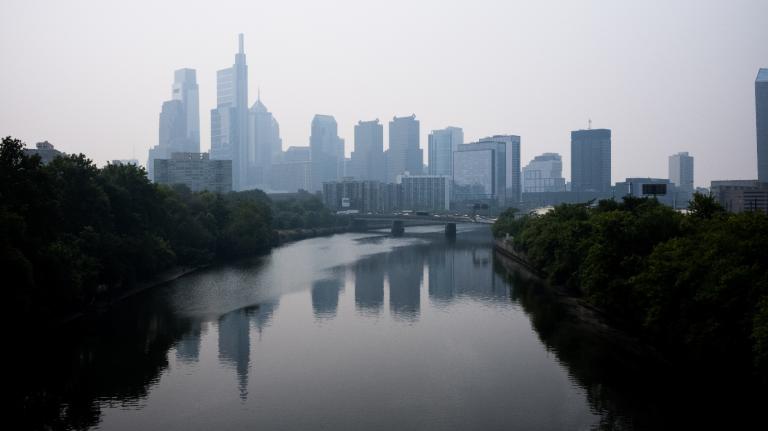The new conventional wisdom among the political class is that President Obama is doing everything he can without the cooperation of Congress to fight climate change. His administration set higher fuel-economy standards for cars and trucks. It has proposed the first-ever regulations on carbon emissions from power plants, and on methane leakage from oil and gas wells and pipelines. He got China on board with a plan to limit emissions, potentially paving the way for an international climate agreement later this year in Paris. Obama feeds this perception with his public statements, such as emphasizing the importance of climate change in his State of the Union address and musing to Vox.com about how the media fails to cover climate change with the urgency of other national security threats.
But many of the administration’s moves, including a string of recent actions by federal agencies under Obama’s control, show this conventional wisdom to be false. Here are the president’s top eight climate failings, many of them from just the three months since the midterm elections:
1. Opening more federal land and water to oil and gas drilling
The Obama administration just keeps handing out leases to drain fossil fuels from our public lands and waters. Three weeks ago, the Bureau of Ocean Management announced plans to open up a previously off-limits portion of the mid-Atlantic coast to oil and gas exploration, along with parts of the Arctic Ocean and the Gulf of Mexico. The White House frequently brags about how oil and gas extraction, on both public and private lands, has risen under Obama. The number of operating oil and gas rigs in the U.S. rose 18 percent from January 2009 to April 2014, the White House proudly noted last year, and in 2013, the “Bureau of Land Management (BLM) held 30 separate oil and gas lease sales, offering 5.7 million acres for lease by industry, the most in a decade.”
2. Selling off public coal deposits at a loss
During his time in office, Obama has sold a staggering 2.2 billion tons of coal from publicly owned land, according to a report put out last year by Greenpeace. That coal will lead to 3.9 billion metric tons of carbon pollution — more than a year of emissions from the entire European Union. And the BLM isn’t even charging market rate for the leases, let alone factoring in climate costs. The coal leases have only brought in $2.3 billion in revenue, while the CO2 pollution from burning all that coal will cause societal damages ranging from $52 billion to $530 billion, according to the government’s own figures on the social cost of carbon. Obama is not required to shower fossil fuel industries with this charity. “He could order the secretary of interior to stop leasing, that’s something we’re advocating Obama should do,” says Marissa Knodel, climate campaigner at Friends of the Earth. “That would be the kind of bold, true climate leadership that we need.”
3. Promoting fracking
Obama touts natural gas as a cleaner bridge fuel to get us from coal to renewables. That’s problematic for a number of reasons. One of them is that the current natural gas boom is made possible by the rampant deployment of fracking technology, which has adverse environmental and health impacts on neighboring communities, due to the release of volatile organic compounds into the air, along with gas and mysterious chemicals from fracking fluids into water sources. Natural gas companies point to the dearth of data linking fracking to water pollution or long-term health effects — a problem which has not been helped by EPA abandoning at least three studies of fracking’s effect on drinking water. Meanwhile, the administration promised to make rules governing fracking on federal land that would set the highest possible environmental standards and provide a good example for states and voluntary industry efforts. But, after the oil and gas industry whined about the initial proposed rules, Interior released the a weakened revised proposal in 2013. As The Hill reported, “concessions to the oil-and-gas industry … include allowing drillers to use an existing, industry-favored database called ‘FracFocus’ to meet the rules’ chemical disclosure requirements — a tool that critics call too weak.” Green groups and congressional climate hawks like Sen. Ed Markey (D-Mass.) criticized the proposal as ineffectual. Letting frackers pollute their neighbors’ air and water is just another way of subsidizing fossil fuel production. We’re currently awaiting the soon-to-be-finalized rule.
4. Allowing more gas and oil exports
Supposedly, Obama’s “all-of-the-above” energy policy exists to serve up cheap energy to U.S. consumers. But the administration has been willing to loosen export restrictions so that it can instead serve foreign consumers — at a higher cost to the climate. Last year, the admin streamlined the process for approving export terminals for liquefied natural gas, even though LNG has a much larger carbon footprint than regular natural gas due to the energy needed to freeze, ship, and regassify it. Communities in coastal areas where terminals are proposed also worry about threats to aquatic life and the potential for terrorist attacks. The Cove Point terminal proposal in Maryland, for example, was approved last year over strong objections from environmentalists. The White House is now working with Sen. John Hoeven (R-N.D.) on a bill to expedite LNG terminal approval. The administration is also chipping away at the long-standing ban on exporting crude oil. In December, the Department of Commerce approved a series of industry requests to export a specific type of light oil, and last year the U.S. allowed more than twice as much crude oil to be exported to Canada as in 2013. Energy Secretary Ernest Moniz has suggested that it’s time to reexamine the oil export ban altogether. Allowing more exports of oil and gas encourages American companies to drill more.
5. Proposing weak rules on methane leaks
Last month, the EPA proposed for the first time ever to regulate methane leaks from oil and gas operations — a great idea, as such leaks account for roughly 3 percent of U.S. greenhouse gas emissions. But it turns out those rules won’t be nearly as far-reaching as they could and should be, as they would apply only to new wells and pipelines, leaving thousands of existing sources of leakage untouched. One study last year projected that nearly 90 percent of methane emissions from the oil and gas sector in 2018 would come from sources that were already operating in 2011 — and all of those sources could just keep on leaking under the EPA’s proposal. That’s why most of the leading environmental groups strongly criticized the plan.
6. Regulating coal ash like banana peels
In December, the Obama administration squandered an excellent opportunity to clean up one of the dirtiest aspects of coal burning, and to make coal-power producers pay more of the true cost of doing business, thereby making wind and solar more cost-competitive. The EPA was tasked with developing rules for disposal of coal ash, a byproduct of coal burning that’s laden with toxic heavy metals such as arsenic and lead. Over 100 million tons of this crap are produced in the U.S. every year, and often it’s simply dumped into a hole in the ground, sometimes right next to a water source, as power plants are often next to rivers. Green groups want EPA to label coal ash as hazardous waste, in order to subject it to more rigorous disposal regulations. Instead, in the rule that was finalized in December, EPA is treating coal ash as “solid waste,” which has lighter requirements. By going easy on coal plants’ conventional pollution, the administration makes it easier for coal plants to spew climate pollution too.
7. Going soft on ozone pollution
Perhaps no issue better illustrates the Obama administration’s worst impulses as industry toadies than the saga of the ozone standards. Ground-level ozone — the bad kind of ozone, better known as smog — is created by chemical byproducts of industrial processes, like nitrogen oxide from fossil fuel combustion. It causes respiratory ailments such as asthma and can lead to premature death. The George W. Bush administration failed to tighten smog rules to the level recommended by EPA scientists, as you might expect — but then in Obama’s first term, his administration did the same thing, for fear of angering big business ahead of the 2012 election. Last year the EPA reviewed the rules again. The current allowable level of ozone in the air is 75 parts per million, and the EPA’s scientific advisory committee recommended lowering that to 60 to 70 ppm, while health and environmental advocates say it should be set at 60. The EPA is proposing 65 to 70, and when the rules are finalized, they’re likely to be at the high end of that range — an improvement, but still kind of wussy. Again, this would mean going easy on fossil fuel interests, letting them continue to impose the costs of their pollution on society.
8. Counting chopped-down trees as “clean energy”
The EPA is threatening to incentivize burning down our forests for energy. In implementing the Clean Power Plan to reduce CO2 emissions from power plants, it will matter enormously how the EPA calculates the CO2 emissions from different energy sources — and there are troubling signs on that front. As Politico’s Michael Grunwald recently reported, “A November 19 EPA policy memo suggests that the administration intends to treat electricity produced from most forest and farm products as carbon-free.” The E.U. made this same mistake, incorrectly assuming that burning trees for energy is carbon-neutral. Now, as a result, American forests are being chopped down to provide “renewable” energy to Europe. The rationale is that if you plant a new tree to replace the felled one, you do not lose a carbon sink, but the science is not that simple, plus the whole process of drying and shipping wood pellets creates carbon emissions. As The Huffington Post’s Kate Sheppard reports, a group of climate scientists, engineers, and ecologists just sent a letter to EPA Administrator Gina McCarthy arguing that using biomass for energy would increase emissions. It’s not yet clear whether the EPA will treat biomass as carbon neutral, but it is clear that environmentalists cannot assume the Obama administration will implement even its most important rules with the best available science.
Time after time, the Obama administration encourages fossil fuel exploitation, no matter the cost to taxpayers in terms of the Treasury or the climate. And when it comes to regulating polluters, the results are too often soft rules that fall short of environmentalists’ hopes, or no rules at all. Even the most moderate of green organizations have criticized some of Obama’s recent moves.
Since these are matters of presidential discretion, Obama has no obligation to compromise with congressional Republicans. If he took the strongest, most climate-protective stance at every opportunity, he might then have something to trade with congressional Republicans — like drilling offshore or coal mining on public lands — in exchange for a carbon price. More realistically, Republicans will continue to reject a carbon price and refuse to make any compromises. But why does Obama compromise with himself? Six years into his presidency, he still shies away from using the levers of power that are readily available to him. Perhaps he just doesn’t care about climate change as much as he claims to.



